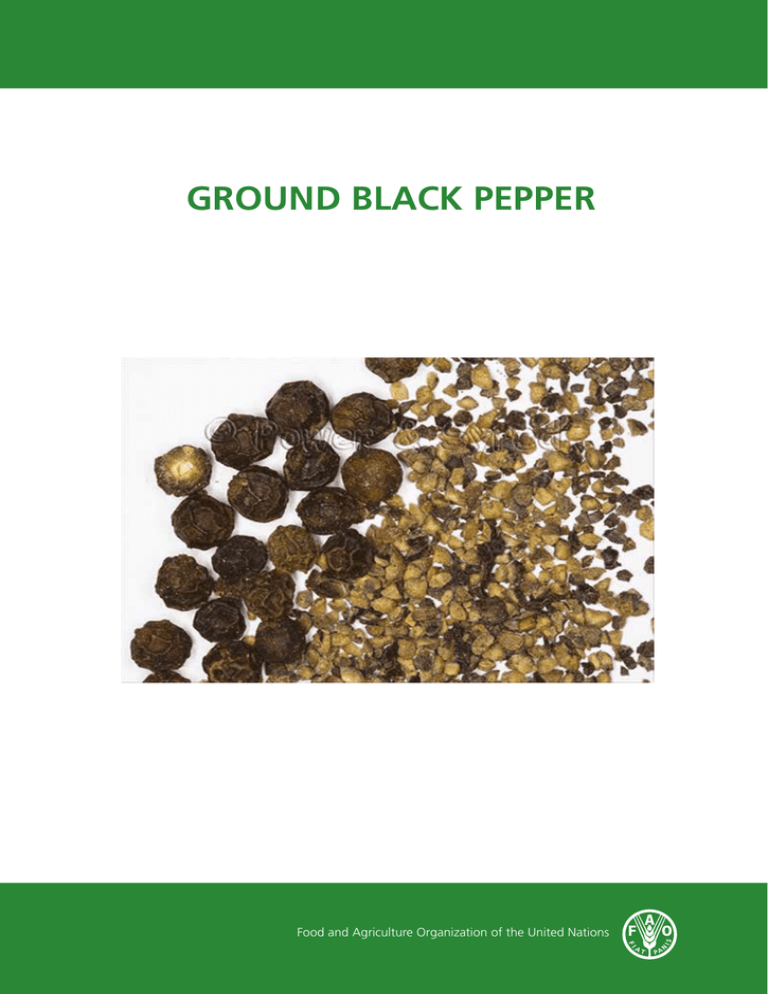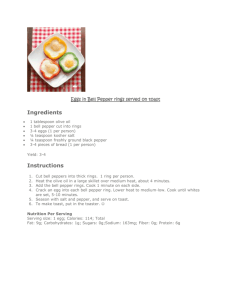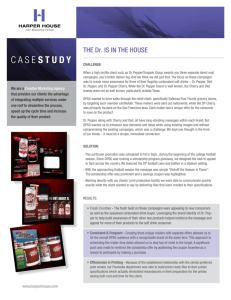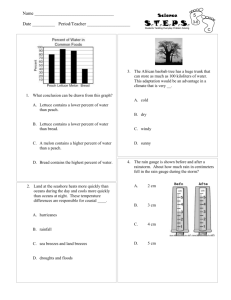ground black pepper - Food and Agriculture Organization of the
advertisement

GROUND BLACK PEPPER Food and Agriculture Organization of the United Nations GROUND BLACK PEPPER 1.- Ground Black Pepper General Information The powdered black pepper is obtained from a grinding process of the pepper grains. The same cares recommended for reduction in the moisture level and impurity contents should be also considered for the production of the powdered black pepper. Whereas for the production of the whole pepper it is necessary the grains to be intact, for obtaining the ground pepper this is not required. The ground black pepper can be used in all salty meals. It is an ideal ingredient in the cooking water for meats, sauces, and at the final preparation of vegetables, sprayed on meats, fish and chickens before grilling. After harvesting, the whole pepper or the powdered one that will be marketed are subjected to the same treatment type, except for the grinding process that is only accomplished in the production of ground pepper. So, all processing stages described for the intact black pepper occur in the production of the powdered black pepper. Projects and small businesses may involve only one or several of the activities in the total chain, from the growing of crops through to the production of edible products. Some small businesses are set up to clean, cut and package spices. These businesses can be successful as there is very little need for equipment. However, as with all businesses, there must be a rigorous quality control and there must be a clear demand for the product, too. 2.- Ground Black Pepper Processing details 2.1.-Second Drying This drying occurs during the black pepper processing in the industrial unit. The first drying occurs soon after the harvest, and it is performed in order to reducing the amount of water in the grains, but not to adjusting the moisture content at optimum level. During their transportation and until undergoing the second drying, the grains can reacquire some moisture. So, the second dehydration process will reduce the moisture content until a preestablished level. The drying by direct exposure to the sun is still practiced in large scale. However, its is limited to regions with hot and dry climate and high insolation. In the indirect system, the heat is transmitted to the grains through the hot air that circulates tangentially to the product by a horizontal or transverse flow. The time and the drying temperature depend on the air relative humidity, air speed inside the cabin, and the characteristics of the equipment. For small and medium enterprises, the cabinet and continuous belt dryers are most suitable, but the first ones are less expensive. 2.2.-Milling This operation will occur through a hammer-type mill. Hammer mills consist of a circular chamber in which beaters whirl at high speed. The milled grain is filtered out through the perforated plate that runs around the edge of the mill chamber. The size of the holes in the perforated plate determine the fineness of grinding of the particles. It is important to ensure that the grains have the optimum moisture content before milling. If the grain is too dry and hard, it is difficult to break down and requires more energy to convert it into flour. If the grain is too moist, the material sticks to the mill. 2.3.-Weighting After dehydration, the weighting and the calculation of the production output from the dehydration process are accomplished. Some care should be taken for no lack of the product to occur in the packaging. The amount of product in each packaging will depend on the form of the chosen packaging, if glass pot, plastic pot, or plastic package. 2.4.-Packaging The black pepper (in whole or ground) should be packed into polypropylene packagings (bags or flasks) or glass. All packagings must be hermetically sealed to avoid loss in the mass or modifications in the moisture content. Some care should be taken when removing the air from within the packaging before sealing. The vacuum packaging improves the conservation of the quality of the dehydrated pepper. 2.5.-Storage The dehydrated pepper must be stored in fresh places that are protected from the light and moisture. The light alters the color, whereas the heat reduces the life time of the product.



